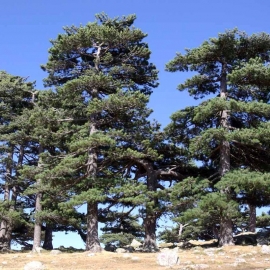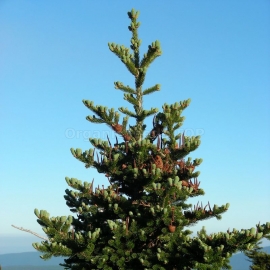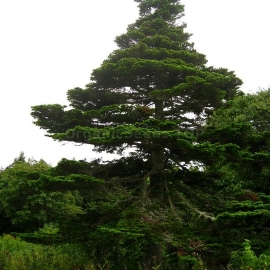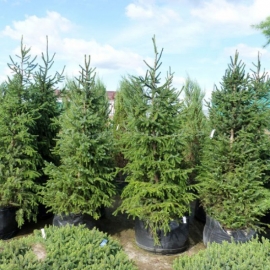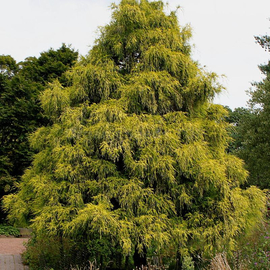






Organic Сypress sawara seeds
1.14 €
Coniferous trees are attractive to gardeners for their unpretentiousness and decorative properties. The crown of the plant in the shape of a regular cone lends itself well to trimming, allowing you to create interesting architectural forms, as well as for
-
Сypress sawara / Chamaecyparis pisifera
A coniferous tree from the Cypress family is attractive to gardeners for its unpretentiousness and decorative effect. The crown of the plant in the shape of a regular cone lends itself well to shearing, allowing you to create interesting architectural forms. Often used to create bonsai.
In nature, the plant can reach several tens of meters in height (up to 40), forming a slender cone-shaped tree. In the harsh climate of our country, wild forms of cypress grow much lower. Cultivars have a height of 50 cm to 3–4 m. The color of the smooth bark of an adult tree is reddish.
The branches of the cypress pea grow from the trunk parallel to the soil, lowering the tips down. They are flat in shape, covered with scaly needles. The color of the needles in the natural form is dark green, in artificially obtained varieties it can be blue, light green, golden.
The plant is dioecious. Numerous cones ripen on female specimens. They are round, up to 8 mm in diameter, similar to peas (hence the name "pea-bearing"). Fruit color is brown. The seed has two wings and is easily dispersed by the wind.
The conifer propagates by seeds. Cultivars are still cuttings by grafting.
Pea-bearing cypress is represented in cultural horticulture by several varieties. They differ in size, color of needles. Dwarf varieties are suitable for indoor growing. Pea cypress will become a very desirable exotic in the decorative landscape of any garden, recreation area, hedge.
Pea cypress, like other species, prefers well-drained, breathable, moist and nutritious, slightly acidic light loams or sandy loams. It does not tolerate stagnant water, which can rot the roots, which leads to the death of the plant. To avoid this, it is better to plant cypress on a hill. Cypress trees are sensitive to dry soil and air; in hot summers, they should be watered at least once a week and, if possible, sprinkled. This reduces the likelihood of damage to cypress spider mites.
For coniferous plants, the mycorrhiza formed with soil fungi is vital, therefore, when planting a cypress seedling in a planting hole at least 0.5 m deep, first fill in a drainage layer of sand, finely broken bricks. Then mix peat, sand and forest floor (with rotted leaves, needles, rotten wood, moss) in a ratio of 1:2:1.
How to grow Conifers from seeds
With this product buy
Product code: 3669
1.14 €
The Austrian Pine is a handsome large growing tree native to Austria and most of the Balkans. It can be long lived, with some trees over 500 years old. It needs full sun to grow well and is intolerant of shade.
Product code: 12423
1.14 €
Balsam fir is a native tree of Canada and grows to be a medium sized tree typically ranging from 15-20 m (50-66') in height. It makes a nice specimen for larger landscapes and is of considerable importance in the Christmas tree trade.
Product code: 12426
1.14 €
Noble fir is native to a limited area on the Pacific Coast region of North America, growing in the Cascades from the northern border of the state of Washington south to the border between Oregon and California.
Product code: 13580
1.14 €
The tree can withstand up to -30 ° C, the crown of the plant is regular, conical, needles 2-4 cm long. The tree can grow in partial shade, but loves fertile soils, an excellent decoration for gardens and parks. single and group landings.

